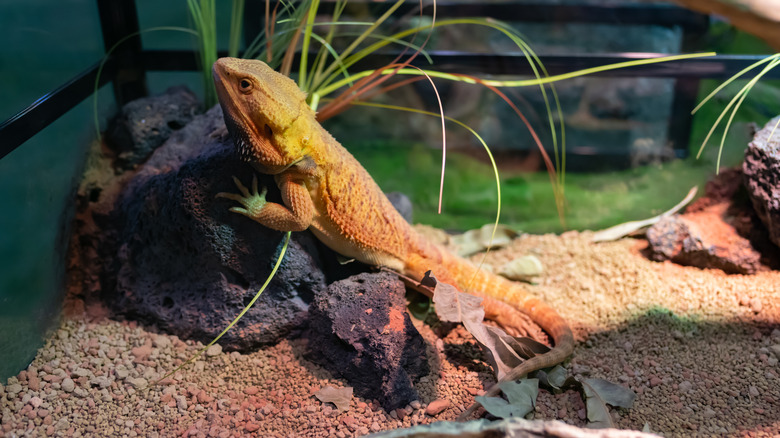Chameleon Life Cycle
After birth or hatching from their eggs, chameleons begin eating and growing. Most species mature relatively quickly — within three to 12 months, depending on the species – and begin seeking out conspecifics (others of their kind), defending territory and mating. They dedicate most of their adult lives to reproduction, and chameleons usually attempt to breed until they die. However, the more than 150 living chameleon species exhibit considerable variation in life history, primarily as it relates to their reproductive strategy.
Egg Deposition
Many prolific species deposit their eggs shortly after fertilization; for example, female veiled chameleons (Chamaeleo calpytratus) only carry their eggs for about two to four weeks. By depositing their eggs quickly, the females can initiate the development of new eggs, which they usually fertilize with stored sperm. This allows females to produce more offspring than species that carry eggs or young for longer periods of time.
Diapause
The eggs of some chameleon species incubate for varying lengths of time. Some clutches begin hatching as soon as six months after deposition, whereas others incubate for a full year before hatching. This happens because some chameleon eggs can pause their development – a phenomenon called diapause – and restart development at a later time. While the phenomenon is not yet completely understood, a study by Robin M. Andrews and Susuan Donoghue, published in a 2004 issue of "Journal of Experimental Zoology," found that veiled chameleon eggs resume development in response to rising temperatures.
Live Birth
While most commonly kept chameleon species are oviparous, meaning they deposit shelled eggs, some female chameleons are ovoviviparous. This means that they carry their eggs internally for the duration of their development. As the female ejects the litter from her body, they begin hatching from flexible membranous eggs. Some may hatch before they emerge from the female's cloaca. Technical details aside, such species essentially give live birth.
One commonly kept ovoviviparous species is the Jackson's chameleon (Trioceros jacksonii). Female Jackson's chameleons generally carry their first litter for seven to nine months; subsequent litters occur every three months. Each litter typically contains about 20 to 30 offspring.
Life Span
Although many common pet species, such as panther, Jackson's and veiled chameleons, live shorter lives in the wild, they often survive for about five to 10 years in captivity. However, other chameleons live much briefer lives. For example, the Labord's chameleon (Chamaeleo labordi) spends more of its short life inside its egg than it does outside. These lizards live for only four or five months, but the incubation period of the eggs is usually about eight or nine months. Because these animals breed, hatch and mature at about the same time, the trees in their native lands are devoid of the species for the entire dry season, as the next generation resides inside eggs buried in the substrate.
Among those species with relatively long life spans, males often outlive females. This is likely due to the wear and tear that constant reproduction places on their bodies. For example, male Jackson's chameleons may live for about a decade, but the females only live about half as long. A similar pattern is seen among veiled chameleons as well.
